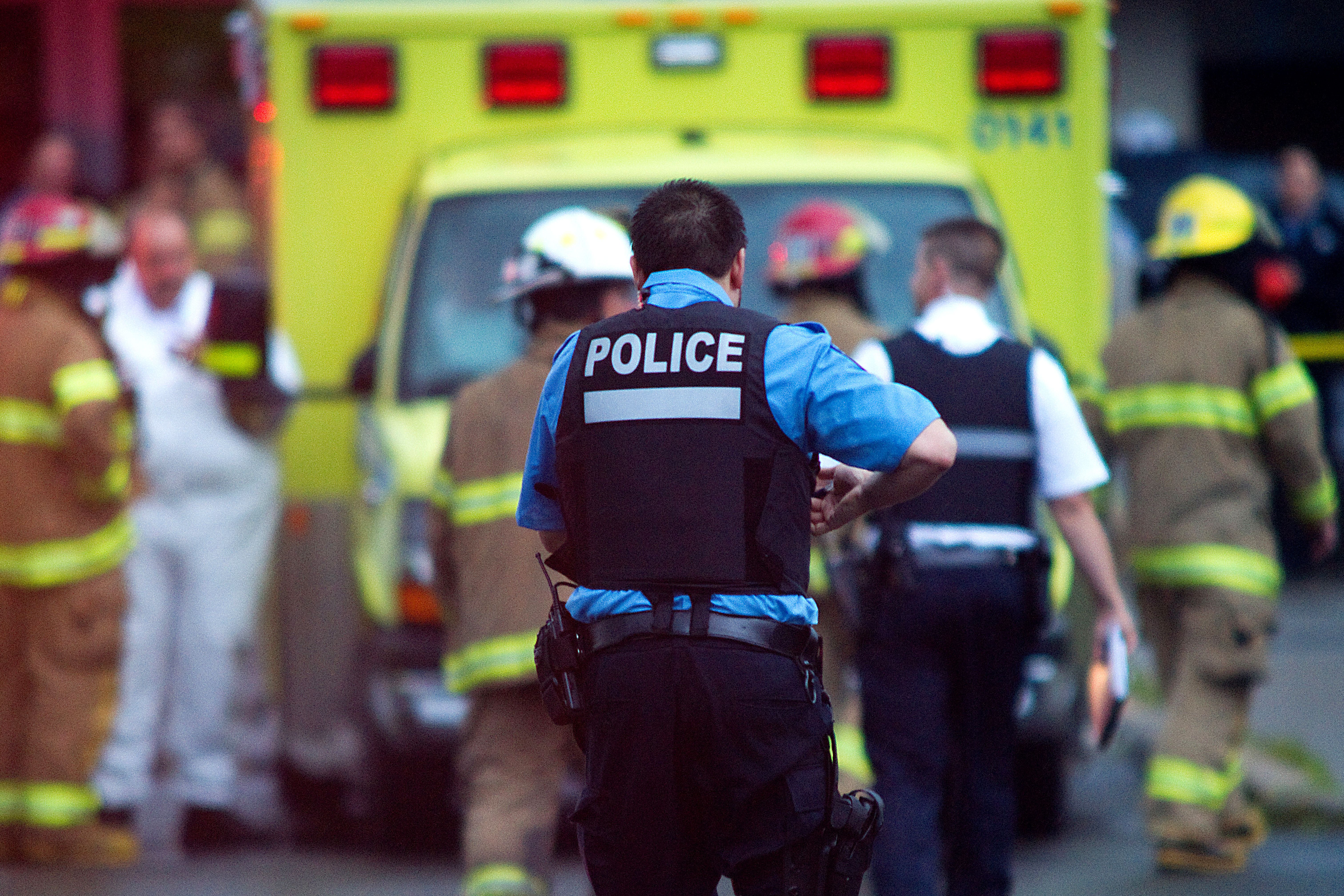News
Article
Exploring the Neural Mechanisms Underlying PTSD in World Trade Center Responders
Author(s):
“Our findings might inform PTSD pathology, treatment plans, and future disaster-response strategies.”
mario beauregard_AdobeStock

Q&A
What are the neural mechanisms that underlie posttraumatic stress disorder (PTSD) in World Trade Center (WTC) responders? A new study provides novel insights into these neural mechanisms using resting state functional magnetic resonance (rs-fMRI) data—the first of its kind to do so. Psychiatric Times® discussed the study’s results and novel insights with corresponding author Azzurra Invernizzi, PhD.
Psychiatric Times: Can you tell us about the main findings of your study regarding the impact of the World Trade Center (WTC) events on responders’ mental health? What surprised you the most about these findings?
Azzurra Invernizzi, PhD: This is the first ever study using a neuroimaging technique called resting state-fMRI data to provide novel insights into the underlying neural mechanisms and changes in plasticity of the human brain in WTC responders who experienced the traumatic exposures at 9/11. Specifically, we focused on individuals who developed PTSD following WTC traumatic events.
PTSD is a psychiatric disorder characterized by persistent and intrusive memories of the stressful events that can cause behavioral and social impairments. Our findings showed significant changes in brain functionality only for those who developed PTSD after the WTC events. These changes were found in 9 specific brain areas that have been previously associated with PTSD.
Surprisingly, we found that these functional changes are connected to both the traumatic experiences at the WTC, as well as with PTSD symptomatology.Our results confirm previous results presented in literature and further contribute to our understanding of the neurobiological underpinnings of PTSD in WTC responders.
PT: Your study identified significant changes in brain functionality among WTC responders who developed PTSD, but not in those who did not develop PTSD. Can you elaborate on the specific brain regions that showed changes in functionality and their connection to PTSD symptoms? How does this contribute to our understanding of PTSD pathology?
AI: We identified clear differences in functional neuro-profiles of WTC responders with and without PTSD providing a robust basis for discriminating trauma survivors who did and did not develop PTSD.
Discrimination between groups is primarily attributable to connectivity differences in 9 brain regions: right and left anterior inferior temporal gyrus, right superior parietal lobule, right anterior parahippocampal gyrus, right anterior and posterior temporal fusiform cortex, right caudate nucleus, left amygdala, and the brainstem. Within the WTC-PTSD group, functional connectivity of 2 out of the 9 brain areas were found positively associated with a dimensional measure of PTSD symptom severity: the right anterior parahippocampal gyrus and brainstem.
In our cohort, avoidance symptoms contributed most to the association between overall PTSD symptoms scores and functional difference in the parahippocampal gyrus. The parahippocampal gyrus surrounds the hippocampus and is part of the temporal lobe network. Parahippocampal gyrus function is crucial for encoding and retrieving episodic, spatial, and contextual memories. Consistent with these functions, previous studies linked this cortical brain area with avoidance behavior, disrupted encoding of episodic and autobiographical memories, and functional changes in PTSD subjects. Hyperarousal symptoms contributed the most to the association between PTSD symptoms scores and centrality values.
The brainstem is critical to convey continued inputs brain-body and to regulate a number of conscious and unconscious processes (ie, to generate and maintain the general arousal state and to provide the trigger for innate, reflexive defensive responses). Previous studies showed that prolonged and repeated traumatic experiences lead to changes in this brain area, and emerging evidence suggests its critical role in the neurobiological model of PTSD.
Taken together, our results help disentangling the unique contribution of each PTSD symptom within the functional neuro-profiles in the WTC-PTSD group and further our understanding of neurobiological mechanisms underpinning PTSD in those who experienced traumatic events (ie, WTC).
PT: The study found that, among the WTC responders, 23% continue to experience chronic PTSD. Why do you think some responders developed PTSD while others did not? How might these insights help clinicians provide better support to patients with PTSD or who experience traumatic events?
AI: Among the more than 35,000 responders enrolled in the ongoing WTC-HP, 23% of them continue to experience chronic WTC-related PTSD. In this study of responders selected on PTSD case status (WTC-PTSD vs WTC non-PTSD), the duration of WTC exposure (ie, number of months spent at the WTC site in rescue and recovery efforts) did not differ between responders with PTSD and those without PTSD. Although all responders experience some degree of traumatic exposure, not all responders develop PTSD. This difference between WTC responders together with which factors played a protective effect on WTC responders who did not develop PTSD is still not clear.
Among responders with PTSD, we observed a decreased connectivity in the right anterior parahippocampal gyrus and the left amygdala, which are associated with prolonged WTC exposure during search and rescue efforts at and for months after 9/11. During these months on the pile, WTC responders experienced traumatic events and inhaled dust and smoke containing many pollutants (ie, particulate matter, lead, polycyclic aromatic hydrocarbons [PAHs], polychlorinated biphenyls [PCBs], and dioxins). This unique combined exposure may play a role in the anatomical and functional changes observed in our population.
These changes and their significant association with longer WTC exposure involve only specific cortical and subcortical brain regions such as the whole hippocampus and its subfields, parahippocampal gyrus, amygdala, and frontal and parietal brain regions that seem more vulnerable to experience at the WTC site. The fear-conditioning mechanism and novel neurocircuitry models suggest the triggering event—in this case, WTC—responders experience during rescue and recovery efforts, targets brain areas known to be involved in PTSD (ie, the parahippocampus and amygdala). In particular, the amygdala plays a key role in PTSDand is involved in personality, emotional, and behavioral regulation, fear and fear conditioning, and memory of stressful events.
All together, our results confirm previous results presented in literature and identified brain areas that can potentially be used as targets in customizing intervention treatments. Treatments based on transcranial magnetic stimulation (TMS) and deep brain stimulation might consider the use of rs-fMRI data together with targeting data-driven methods (ie, graph theory) to customize intervention by modulating relevant neural networks.
It is important to point out that this study looks only at 1 particular network property (eigenvector centrality) and does not fully characterize the role of these hubs within the broader neurocircuitry associated with PTSD-related symptoms and behaviors.
PT: Previous research has used structural MRI to identify anatomical differences in WTC responders with and without PTSD. How does your study’s use of resting-state fMRI provide additional insight into the relationship between traumatic experiences and PTSD development? What advantages does resting-state fMRI offer in this context?
AI: This is the first study to use graph-based network metrics of rs-fMRI and data-driven methods to investigate mechanisms through which PTSD impacts neural functioning and define differences between PTSD and non-PTSD in WTC responders, which are still not well understood. Little is still known about how WTC traumatic events affect the integrity of cortical functional networks at the global and local level.
Further, rs-fMRI is a powerful tool to investigate trauma-related brain changes, given the low burden on the participants during data acquisition—usually participants are instructed to lay still in the scanner with their eyes closed, while allowing their mind to roam freely (ie, not focusing their thoughts on anything in particular). Rs-fMRI data, together with a reliable data-driven connectivity approach, as presented in our work, provides a feasible approach to identify brain regions that can potentially be used as targets in customizing intervention treatments (ie, TMS).
PT: Your study concludes that functional neuroimaging can effectively identify neural correlates of both diagnostic indicators and dimensional measures of PTSD severity. How might these findings impact the development of more targeted and personalized treatment plans for individuals with PTSD, especially WTC responders?
AI: Our work shows how rs-fMRI data, together with a reliable functional connectivity-based method, advances the identification of brain regions that can potentially be used as targets in customizing intervention treatments. Treatments based on TMS and deep brain stimulation might consider the use of rs-fMRI data together with targeting data-driven methods (ie, graph theory) to customize intervention by modulating relevant neural networks.
It is important to point out that this study looks only at 1 particular network property (centrality) and does not fully characterize the role of these hubs within the broader neurocircuitry associated with PTSD-related symptoms and behaviors. Additional follow-up studies are needed to understand the characteristics of these particular nodes within the broader relevant functional networks and to further clarify the specific relevance to the development of PTSD related symptoms and behaviors in WTC responders and the population more broadly.
Read the full study here.
Dr Invernizzi is a postdoctoral fellow in Dr Megan Horton’s environmental neuroscience lab in the Department of Environmental Medicine and Public Health at the Icahn School of Medicine at Mount Sinai, New York.
Note: These interview questions were generated with the assistance of ChatGPT.
Newsletter
Receive trusted psychiatric news, expert analysis, and clinical insights — subscribe today to support your practice and your patients.






